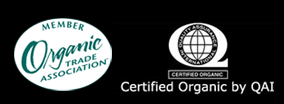Benefits of Catuaba Bark
When I first decided to formulate Hot Rawks, I knew that one of the herbs I would use had to be Catuaba Bark. It is a safe yet powerfully effective herb but it is also rare to find here in the U.S., specifically in its organic and raw form which yields the most benefits.
Catuaba Bark is a South American herb that has been used as an aphrodisiac by shamans and plant experts for centuries (particularly in Brazil, which comes as no surprise to me since Brazilian folks are some of the most sexually delicious people on the planet.) If you are ever lucky enough to visit this “place of ridiculously beautiful people”, will find Catuaba in most supermarkets, often infused with wine and sold as a sexual stimulant. It’s very popular among young Brazilian couples (again, no surprise here). In fact, Catuaba has been nicknamed by herbalists all over the world as the “Brazilian Viagra”, but obviously without the harmful side effects. In Brazil, Catuaba is so strongly revered that there’s even an old saying that goes: “up to sixty years old, a father’s children are his own; after sixty, they come from the Catuaba.”
Catuaba is known to stimulate the nervous system and enhance sexual function in men and women alike. It’s also used to treat fatigue, insomnia, erectile dysfunction, impotence, and poor circulation.
Its unique chemical composition of tannins, phyto-chemicals, and powerful flavonoids give Catuaba its strong antioxidant properties and its ability to strengthen blood cells and help them fight off certain viruses and pathogens, including the HIV virus.
The problem with buying Catuaba here in the U.S., is that its potency isn’t always guaranteed. There are many forms of the herb, but only the purest, organic Catuaba will give you the benefits you desire. Of course we only use the purest and most potent forms of Catuaba bark in Hot Rawks, and each batch is flown in, direct from Brazil, and thoroughly tested before being used in our formula.
REFERENCES:
http://en.wikipedia.org/wiki/http://en.wikipedia.org/wiki/Catuaba
http://www.rain-tree.com/catuaba.htm
http://www.ncbi.nlm.nih.gov/pubmed/610675
http://www.ncbi.nlm.nih.gov/pubmed/646590
http://www.naturalnews.com/021539.html
Queiroz EF, Zanolari B, Marston A, Guilet D, Burgener L, Paulo Mde Q,
Hostettmann K. “Two new tropane alkaloids from the bark of Erythroxylum
vacciniifolium
Mart.
(Erythroxylaceae).” Nat
Prod
Commun.
2009
Oct;4(10):1337-40. PMID: 19911567
Batistini AP, Telles MP, Bertoni BW, Coppede JS, Môro FV, França SC, Pereira
AM. “Genetic diversity of natural populations of Anemopaegma arvense
(Bignoniaceae) in the Cerrado of São Paulo State, Brazil.” Genet Mol Res. 2009 Jan
20;8(1):52-63. PMID:19224467
Valverde G De Andrade D, Madureira de Oliveria D, Barreto G, Bertolino LA,
Saraceno E, Capani F, Giraldez LD. “Effects of the extract of Anemopaegma
mirandum (Catuaba) on Rotenone-induced apoptosis in human neuroblastomas
SH-SY5Y cells.” Brain Res. 2008 Mar 10;1198:188-96. Epub 2008 Jan 14.
PMID: 18241847
Daolio C, Beltrame FL, Ferreira AG, Cass QB, Cortez DA, Ferreira
MM. “Classification of commercial Catuaba samples by NMR, HPLC and
chemometrics.” Phytochem Anal. 2008 May;19(3):218-28. PMID: 17890569
Tabanca N, Pawar RS, Ferreira D, Marais JP, Khan SI, Joshi V, Wedge DE, Khan
IA. “Flavan-3-ol-phenylpropanoid conjugates from Anemopaegma arvense and
their antioxidant activities.” Planta Med. 2007 Aug;73(10):1107-11. Epub 2007
Jul 20. PMID:17642036
Rolim, A.; Oishi, T.; Maciel, C. P.; Zague, V.; Pinto, C. A.; Kaneko, T. M.; Consiglieri,
V. O.; Velasco, M. V. (2006). “Total flavonoids quantification from O/W emulsion
with extract of Brazilian plants”. International Journal of Pharmaceutics
308 (1–2): 107–114. doi:10.1016/j.ijpharm.2005.10.031. ISSN 0378-5173.
PMID: 16324808.
Beltrame, F. L.; Filho, E. R.; Barros, F. A. P.; Cortez, D. A. G.; Casset, Q. B.
(2006). “A validated higher-performance liquid chromatography method for
quantification of cinchonain Ib in bark and phytopharmaceuticals of Trichilia
catigua used as Catuaba”. Journal of Chromatography A 1119 (1–2): 257–263.
doi:10.1016/j.chroma.2005.10.050. ISSN 0021-9673. PMID: 16360665.
Campos, M. M.; Fernandes, E. S.; Ferreira, J.; Santos A. R.; Calixto, J. B.
(2005). “Antidepressant-like effects of Trichilia catigua (Catuaba) extract:
evidence for dopaminergic-mediated mechanisms”. Psychopharmacology
(Berlin) 182 (1): 45–53. doi:10.1007/s00213-005-0052-1. PMID: 15991001.
Zanolari, B.; Guilet, D.; Marston, A.; Queiroz, E. F.; Paulo, M. de Q.; Hostettmann,
K. (2005). “Methylpyrrole tropane alkaloids from the bark of Erythroxylum
vacciniifolium”. Journal of Natural Products 68 (8): 1153–1158. doi:10.1021/
np040144h. PMID: 16124752.
Oliveira CH, Moraes ME, Moraes MO, Bezerra FA, Abib E, De Nucci G. “Clinical
toxicology study of an herbal medicinal extract of Paullinia cupana, Trichilia
catigua, Ptychopetalum olacoides and Zingiber officinale (Catuama) in healthy
volunteers.” Phytother Res. 2005 Jan;19(1):54-7. PMID: 15798997
Glasl, S.; Presser, A.; Werner, I.; Haslinger, E.; Jurenitsch, J. (2004). “Erratum
to Tropane alkaloids from a Brazilian bark traded as “Catuaba”". Scientia
Pharmaceutica 72: 97. ISSN 0036-8709. CODEN SCPHA4.
Kletter, C.; Glasl, S.; Presser, A.; Werner, I.; Reznicek, G.; Narantuya, S.;
Cellek, S.; Haslinger, E.; Jurenitsch, J. (2004). “Morphological, chemical and
functional analysis of catuaba preparations”. Planta Medica 70 (10): 993–1000.
doi:10.1055/s-2004-832627. PMID: 15490329.
Glasl, S.; Presser, A.; Werner, I.; Haslinger, E.; Jurenitsch, J. (2003). “Tropane
alkaloids from a Brazilian bark traded as “Catuaba”". Scientia Pharmaceutica 71:
113–119. ISSN 0036-8709. CODEN SCPHA4.
Zanolari, B.; Guilet, D.; Marston, A.; Queiroz, E. F.; Paulo, M. de Q.; Hostettmann,
K. (2003). “Tropane alkaloids from the bark of Erythroxylum vacciniifolium”.
Journal of Natural Products 66 (4): 497–502. doi:10.1021/np020512m.
PMID: 12713400.
